
ollin Morikawa was tied with Paul Casey for the lead late in the final round of the 2020 PGA Championship at Harding Park, San Francisco.
The pair were just a shot ahead of Bryson DeChambeau, Jason Day and Tony Finau, with Dustin Johnson launching a late bid. It was a misty, pastel day by Lake Merced—it is the Bay Area, remember—and Morikawa’s grey sweater matched the tones of the distant hills under this pale sky. There was an eerie atmosphere, too. It was the final throes of a major championship, bunched up leaderboard, destiny hovering above, yet the pandemic had kept away the galleries, and a muted calm on the golf course was at odds with the sporting spectacle.
Morikawa was pretty calm, too. As he strode up to the short par-four 16th he found the tee markers moved further forward than anticipated. The hole was brought down to 293 yards, the green just off-center to the right, with a stand of cypress trees ready to tangle with anything sliced, and it was a perfect fit for Morikawa’s dependable cut with the driver.
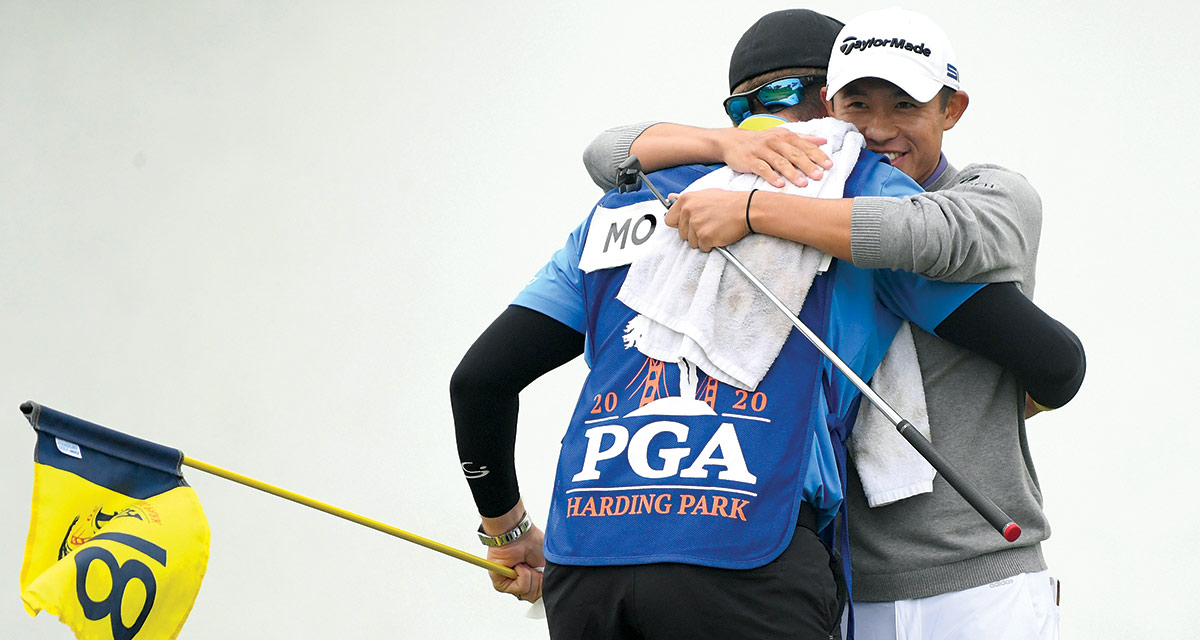
The 23-year-old (at the time) from Los Angeles—playing in his first ever PGA Championship—hadn’t planned to take driver, but he had the clarity of mind to play the hole as it was presented and to seize the opportunity. The fearless pretender played the perfect shot. His drive faded into the green from the left, took one bounce short of the putting surface and rolled up to stop just seven feet from the hole. Standing on the 17th tee ahead, Casey would later call Morikawa’s tee shot a “nail in the coffin.” Morikawa guided in the seven-foot eagle putt and held his composure to beat Casey and Johnson’s late flourish by two.
“I wasn’t planning on going for it at the beginning of the week,” admitted Morikawa afterwards. “I actually never even tried it. It was just something when everything fit; the circumstance, wind and everything was perfect, and obviously it worked out.”
Rick Sessinghaus has coached Morikawa since the golfer was eight years old. Sessinghaus was one of the few people walking with Morikawa that Sunday at Harding Park, along with the golfer’s manager Andrew Kipper and girlfriend (now fiancé) Katherine Zhu.
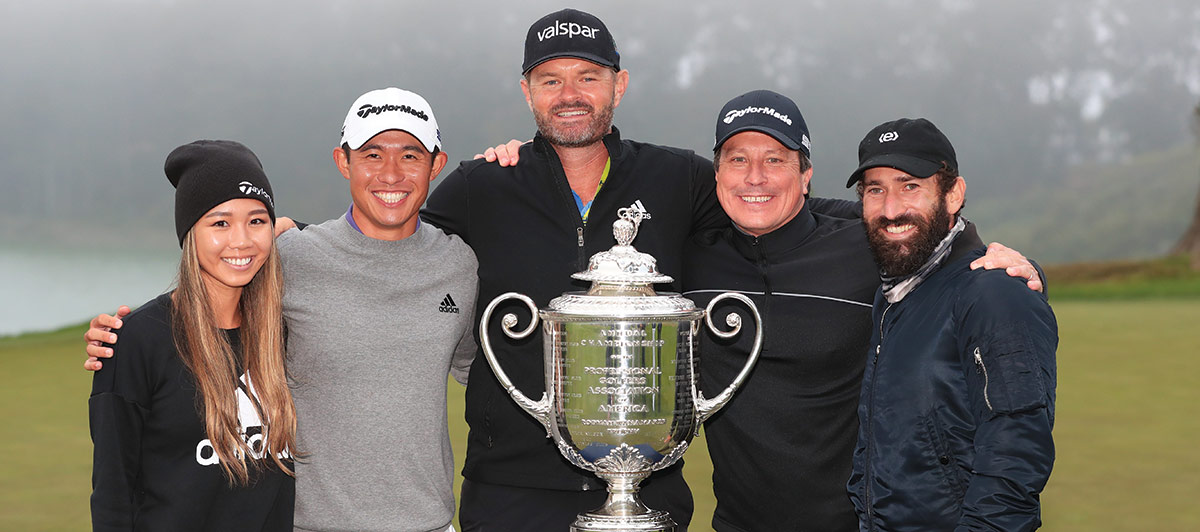
“The shot happened to match exactly what a stock driver is for Collin, so he made the decision,” starts Sessinghaus, who first met Morikawa on the driving range at Scholl Canyon, a small club overlooking Los Angeles. “Some people might say he did it under pressure, but to Collin it was simply the right shot for him to play in that situation. I really appreciate that Collin is able to make those decisions in that kind of situation.”
Morikawa showed the same composure 11 months later, when paired with Louis Oosthuizen in the final group in the fourth round of The 2021 Open at Royal St. George’s. Like at the 2020 PGA, Morikawa was making his debut in The Open, and again, he showed almost unbelievable calm to vanquish more seasoned challengers; ultimately finishing two ahead of Jordan Spieth and four shots clear of Oosthuizen and world No.1 Jon Rahm.
“In the moment Collin is a very focused, calm and composed individual, whether that is on the golf course or not,” adds Sessinghaus, who is a mind coach as well as a PGA professional. “That characteristic only intensifies in a positive way when Collin is under pressure. It is a default.
“It’s like: ‘Okay, I am hitting the tee shot on the 16th at Harding Park. This is going to be fun.’ That perspective is unique. I have cultivated that but Collin already had it at an early age.”
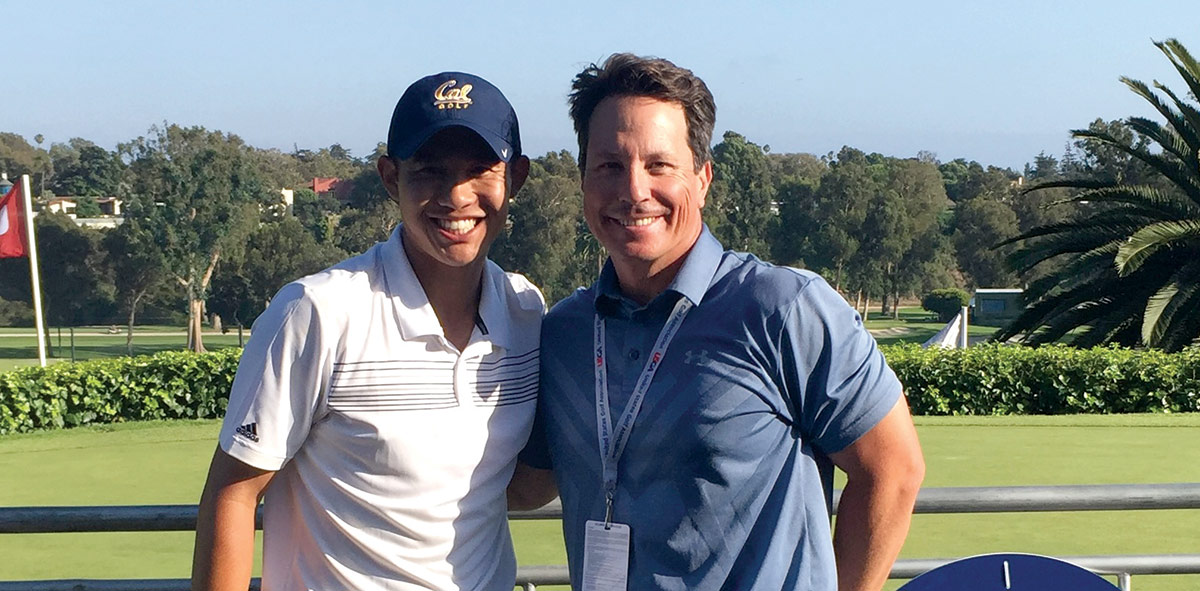
“I pretty much had plastic clubs in my hands before I could walk,” remembers Morikawa in an exclusive interview with Kingdom. “I took my first lessons at the age of five and I loved it, and I think I had a decent swing, which is not that crazy to say for a five-year-old. I joined a junior camp at Scholl Canyon, and down at the far end of the range was this guy Rick giving private lessons, and he has now been my coach for 16 years.”
As he says, lots of kids have good golf swings.
Lots of teenagers have beautifully honed golf swings.
What separated Morikawa from an early age was his attitude and intelligence.
“Even aged only nine, 10 and 11, here was someone who always had a smile on his face, his parents were always supportive,” recalls Sessinghaus. “Collin was always in a good mood, he asked great questions, he liked to compete.
“That is important because a lot of juniors begin to suffer under the pressure put on them by parents and their golf becomes all about having to win a tournament, whereas with Collin and his parents it was always about developing as a player but also always to have fun. If he did play a poor tournament he never made excuses and that’s rare. Collin had a mindset where he was constantly learning, always curious and he put long-term success over short-term fixes.”
Morikawa’s father Blaine was a capable athlete and growing up he was as happy on a surfboard off Long Beach as he was playing baseball or basketball. Morikawa also picked up little league baseball, but his top sporting highlight off the golf course wasn’t on a diamond:
“I’d say the seventh grade Basketball Bowl,” says the former La Canada High School pupil, who turned 25 in February. “It was a one-day event during Thanksgiving, which was a lot of fun. I was MVP for our team and so I would put that high among my career achievements, right next to my majors!”
Yet Morikawa’s favorite playground was the 10-hole golf course at Chevy Chase Country Club in Glendale.
“Chevy Chase is a narrow, very short golf course, and it forced me to be creative,” explains Morikawa. “There were probably only 10 people there a day max., seriously. They had this plateau where you could hit your own balls and pick them up but I hated doing that so they would give me a cart and I would always just go on the golf course and drop a lot of golf balls on the ground.
“There were a couple other guys there, a couple years older than me, who played high school golf, and we would create our own golf holes. We would start on the tee box for number two but play to the fifth green. The golf course was so empty that we could make up our own holes in our own little competition and that was the fun part about growing up around that golf course.”
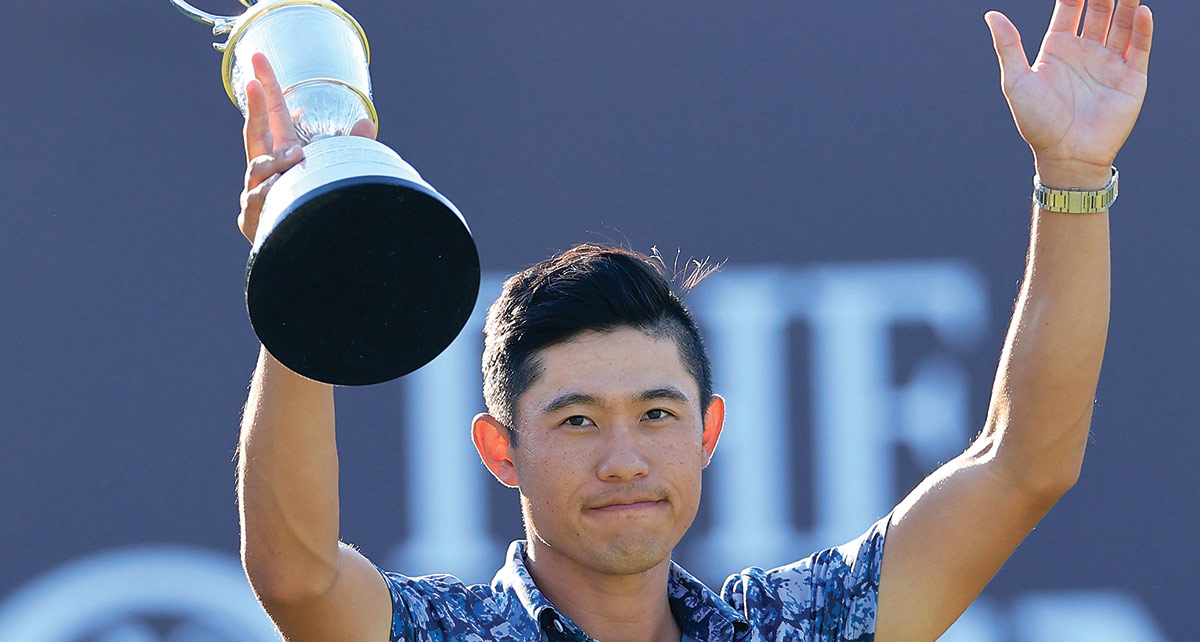
By the time Morikawa was 12, Sessinghaus knew he had the mental and emotional capability to forge an exceptional future in golf. When Morikawa won the 2013 Western Junior aged 15, the golfer began to realize it, too. The Western Junior is played over 72 holes, and that week at Meridian Hills CC, Indianapolis, Morikawa beat a host of older teenagers, shooting four rounds in the 60s to win by five. His 271 was the lowest score in the tournament since Hunter Mahan’s 266 from 14 years before.
“That was the first big junior event I won,” adds Morikawa. “You have to do something special to win and at that point I knew I had that within me. Before then I had top-10 finishes, but winning is different. I hadn’t had the spark to really figure out how to win until then. You have to learn how to win to get to the top level.
“Then as I was transitioning between high school and college I won the Trans Miss Championship and that really catapulted me to the point where I fully believed that, ‘Yes, I can beat everyone out here. I’m not afraid. Let’s see what we can do.’ At that point I was 18.”
Three times Morikawa was named first-team All American at University of California, Berkeley, and on the 2017 U.S. Walker Cup team the smiling assassin won all four of his matches as the home team trounced GB&I in what was as close to a home setting for Morikawa as they come, at Los Angeles Country Club.
From there you are nearly up to date. Morikawa graduated, turned pro in 2019 and promptly made his first 22 cuts on the PGA Tour, an achievement second only to the record of 25 set by Tiger Woods. And within that run was victory in Morikawa’s sixth start, at the 2019 Barracuda Championship.
“It still bites me that I was not able to beat Tiger’s record,” he says. Well, don’t worry too much Collin: not even Woods won any majors on his debuts, whereas Morikawa has done it twice—an astonishing record that is likely to stand not just for years, but perhaps for generations. (Even that momentous victory by Woods in the 1997 Masters—his first major win—was his third attempt at Augusta National. Talk about keeping us all waiting…)
By the way, in July 2020 Morikawa won his second PGA Tour title at the Workday Charity Open, defeating Justin Thomas in a playoff. That meant Morikawa had won twice before he had even missed two cuts on the PGA Tour. The last golfer to do that? You guessed it: Tiger, back in 1996.
When records and comparisons with Tiger Woods keep coming up, as they do for Morikawa, you know something special is occurring.
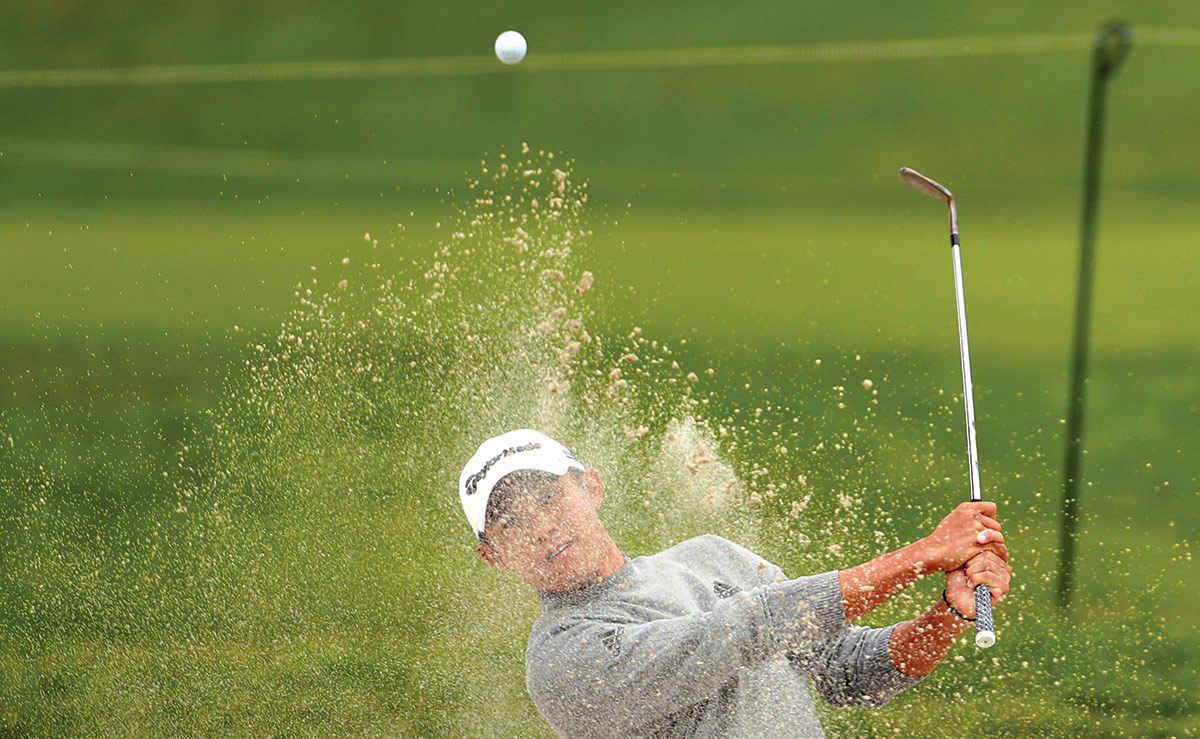
Morikawa didn’t realize it at the time, but as a teenager, when Sessinghaus would take him out on the golf course at Scholl Canyon, the coach was working on his mental fortitude more than technique.
“Seventy percent of our lessons were on the golf course,” explains Sessinghaus. “I would put Collin in golf situations where he felt uncomfortable and make him problem solve. Back then Collin just thought that was what golf lessons were about, but I was teaching him how to use routines to be confident and focused and how to think through shots so he would feel committed to playing a good shot. We talked about that a lot.
“I would want Collin to make the wrong decision in a situation because that is how he would learn to make the right decision in the future. It is pattern recognition and Collin does a very good job of that.”
With these problem-solving lessons, Morikawa was working towards finding what Sessinghaus calls a “flow state,” which the coach has adopted from the theory of Hungarian-American psychologist Mihaly Csikszentmihalyi (a professor at Claremont Graduate University, California).
“Flow state is when we are performing our best, feeling our best, and physiological markers like heart rate and brainwave activity are lower,” says Sessinghaus. “There is a calmness, a focus. Flow state is about focusing on the present moment and that is a high-level skill of Collin’s. He can focus on the present moment and be calm through a mind-body connection, no matter if there is pressure or whatever else you want to call it. It is just another opportunity for him to focus on the present moment.
“Flow state is about confidence. It is the ability to know you have made the right decision and know you have the skills to perform the shot.”
And there we are, transported back to the 16th tee at Harding Park, in the final round of the 2020 PGA Championship, when Morikawa drove for the green with his first major title hanging in the balance, and did so with the measured belief of that young man playing cross-country at Chevy Chase. That wasn’t a pressure situation to Morikawa; it was an opportunity to have some fun—just another chance to do what he loves.
Follow Us On


| Cookie | Duration | Description |
|---|---|---|
| cookielawinfo-checkbox-analytics | 11 months | This cookie is set by GDPR Cookie Consent plugin. The cookie is used to store the user consent for the cookies in the category "Analytics". |
| cookielawinfo-checkbox-functional | 11 months | The cookie is set by GDPR cookie consent to record the user consent for the cookies in the category "Functional". |
| cookielawinfo-checkbox-necessary | 11 months | This cookie is set by GDPR Cookie Consent plugin. The cookies is used to store the user consent for the cookies in the category "Necessary". |
| cookielawinfo-checkbox-others | 11 months | This cookie is set by GDPR Cookie Consent plugin. The cookie is used to store the user consent for the cookies in the category "Other. |
| cookielawinfo-checkbox-performance | 11 months | This cookie is set by GDPR Cookie Consent plugin. The cookie is used to store the user consent for the cookies in the category "Performance". |
| viewed_cookie_policy | 11 months | The cookie is set by the GDPR Cookie Consent plugin and is used to store whether or not user has consented to the use of cookies. It does not store any personal data. |